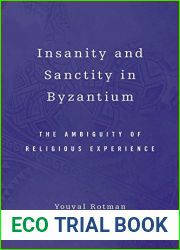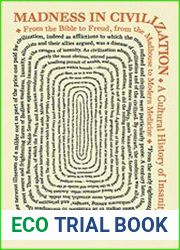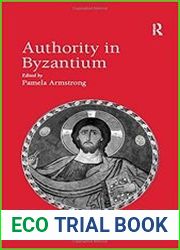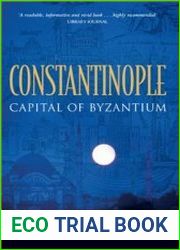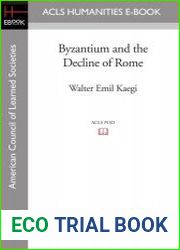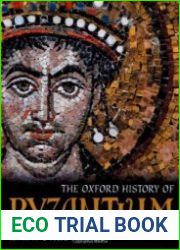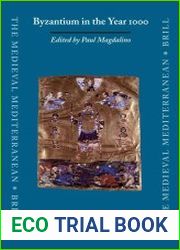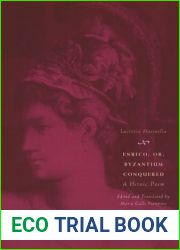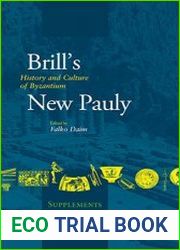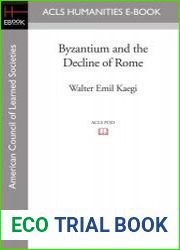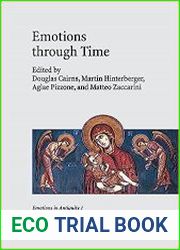
BOOKS - Insanity and Sanctity in Byzantium: The Ambiguity of Religious Experience

Insanity and Sanctity in Byzantium: The Ambiguity of Religious Experience
Author: Youval Rotman
Year: September 19, 2016
Format: PDF
File size: PDF 740 KB
Language: English

Year: September 19, 2016
Format: PDF
File size: PDF 740 KB
Language: English

The book "Insanity and Sanctity in Byzantium: The Ambiguity of Religious Experience" offers a unique perspective on the evolution of religious experiences in the Roman and Byzantine Near East, specifically focusing on the figure of the "holy fool" or "mystic" who embodied extremes of behavior. The author, Youval Rotman, presents a novel interpretation that highlights the central role of psychology in shaping social, cultural, and mental settings, and how these extreme behaviors were used to redefine values and norms in early Christian societies. The book begins by exploring the concept of the holy fool, a figure who was considered both mad and saintly, and how their apparent madness allowed them to achieve a higher level of spirituality. Rotman examines how this figure was used as a means of individual and collective transformation, comparing such forms of extreme behavior in early Christian, pagan, and Jewish societies. Through this analysis, he reveals how the sanctification of abnormal behavior created an ambiguous sphere of religious experience that brought about a deep psychological shift necessary for the transition from paganism to Christianity. One of the key arguments made in the book is that religion played a crucial role in maintaining this ambiguity, using it as a means of effecting social and psychological transformation.
Книга «Безумие и святость в Византии: неоднозначность религиозного опыта» предлагает уникальный взгляд на эволюцию религиозного опыта на Ближнем Востоке Римской и Византийской империи, в частности, фокусируясь на фигуре «юродивого» или «мистика», который воплощал крайности поведения. Автор, Юваль Ротман, представляет новую интерпретацию, которая подчеркивает центральную роль психологии в формировании социальных, культурных и психических условий, а также то, как это экстремальное поведение использовалось для переопределения ценностей и норм в раннехристианских обществах. Книга начинается с исследования концепции юродивого, фигуры, которую считали одновременно безумной и святой, и того, как их кажущееся безумие позволило им достичь более высокого уровня духовности. Ротман рассматривает, как эта фигура использовалась как средство индивидуальной и коллективной трансформации, сравнивая такие формы экстремального поведения в раннехристианском, языческом и еврейском обществах. Посредством этого анализа он раскрывает, как освящение ненормального поведения создало неоднозначную сферу религиозного опыта, которая привела к глубокому психологическому сдвигу, необходимому для перехода от язычества к христианству. Одним из ключевых аргументов, приводимых в книге, является то, что религия сыграла решающую роль в поддержании этой двусмысленности, используя ее как средство воздействия на социальную и психологическую трансформацию.
livre « La folie et la sainteté en Byzantium : l'ambiguïté de l'expérience religieuse » offre une vision unique de l'évolution de l'expérience religieuse au Moyen-Orient de l'Empire romain et byzantin, en particulier en se concentrant sur la figure du « jeune » ou de la « mystique » qui incarnait les extrêmes du comportement. L'auteur, Yuval Rothman, présente une nouvelle interprétation qui souligne le rôle central de la psychologie dans la formation des conditions sociales, culturelles et mentales, ainsi que la façon dont ce comportement extrême a été utilisé pour redéfinir les valeurs et les normes dans les sociétés chrétiennes primitives. livre commence par une étude du concept de la jeunesse, une figure à la fois folle et sainte, et comment leur folie apparente leur a permis d'atteindre un niveau de spiritualité plus élevé. Rothman considère comment cette figure a été utilisée comme un moyen de transformation individuelle et collective, comparant ces formes de comportement extrême dans les sociétés primitives chrétiennes, païennes et juives. Par cette analyse, il révèle comment la sanctification d'un comportement anormal a créé une sphère ambiguë d'expérience religieuse qui a conduit à un changement psychologique profond nécessaire pour passer du langage au christianisme. L'un des principaux arguments du livre est que la religion a joué un rôle décisif dans le maintien de cette ambiguïté en l'utilisant comme moyen d'influencer la transformation sociale et psychologique.
libro «La locura y la santidad en Bizancio: la ambigüedad de la experiencia religiosa» ofrece una visión única de la evolución de la experiencia religiosa en Oriente Medio del Imperio Romano y Bizantino, en particular, centrándose en la figura del «jovencito» o «místico» que encarnaba los extremos de la conducta. autor, Yuval Rothman, presenta una nueva interpretación que destaca el papel central de la psicología en la formación de las condiciones sociales, culturales y mentales, así como la forma en que este comportamiento extremo fue utilizado para redefinir valores y normas en las sociedades cristianas tempranas. libro comienza investigando el concepto de jurodivo, una figura considerada a la vez como loca y santa, y cómo su aparente locura les permitió alcanzar un nivel superior de espiritualidad. Rothman considera cómo esta figura fue utilizada como un medio de transformación individual y colectiva, comparando tales formas de comportamiento extremo en las sociedades cristianas, paganas y judías tempranas. A través de este análisis, revela cómo la santificación de comportamientos anormales creó un ámbito ambiguo de experiencia religiosa que condujo a un profundo cambio psicológico necesario para la transición del paganismo al cristianismo. Uno de los argumentos clave esgrimidos en el libro es que la religión ha jugado un papel crucial en el mantenimiento de esta ambigüedad, utilizándola como medio de impacto en la transformación social y psicológica.
Das Buch „Wahnsinn und Heiligkeit in Byzanz: Die Mehrdeutigkeit religiöser Erfahrungen“ bietet einen einzigartigen Einblick in die Entwicklung religiöser Erfahrungen im Nahen Osten des Römischen und Byzantinischen Reiches, insbesondere in Bezug auf die Figur des „Narren“ oder „Mystikers“, der die Extreme des Verhaltens verkörperte. Der Autor, Yuval Rothman, präsentiert eine neue Interpretation, die die zentrale Rolle der Psychologie bei der Gestaltung sozialer, kultureller und psychischer Bedingungen hervorhebt und wie dieses extreme Verhalten verwendet wurde, um Werte und Normen in frühchristlichen Gesellschaften neu zu definieren. Das Buch beginnt mit einer Untersuchung des Konzepts des Narren, einer Figur, die sowohl als verrückt als auch als heilig galt, und wie ihr scheinbarer Wahnsinn es ihnen ermöglichte, eine höhere Ebene der Spiritualität zu erreichen. Rothman untersucht, wie diese Figur als Mittel zur individuellen und kollektiven Transformation eingesetzt wurde, indem solche Formen extremen Verhaltens in frühchristlichen, heidnischen und jüdischen Gesellschaften verglichen wurden. Durch diese Analyse zeigt er, wie die Heiligung von abnormalem Verhalten eine zweideutige Sphäre religiöser Erfahrung geschaffen hat, die zu der tiefgreifenden psychologischen Verschiebung geführt hat, die notwendig ist, um vom Heidentum zum Christentum zu gelangen. Eines der Hauptargumente des Buches ist, dass Religion eine entscheidende Rolle bei der Aufrechterhaltung dieser Zweideutigkeit gespielt hat, indem sie sie als Mittel zur Beeinflussung der sozialen und psychologischen Transformation nutzte.
''
"Bizans'ta Delilik ve Kutsallık: Dini Deneyimin Belirsizliği" kitabı, Roma ve Bizans İmparatorluğu'nun Orta Doğu'daki dini deneyimin evrimine, özellikle de aşırı davranışları somutlaştıran "kutsal aptal" veya "mistik" figürüne odaklanan benzersiz bir bakış açısı sunuyor. Yazar Yuval Rothman, psikolojinin sosyal, kültürel ve zihinsel koşulları şekillendirmedeki merkezi rolünü ve bu aşırı davranışın erken Hıristiyan toplumlarında değerleri ve normları yeniden tanımlamak için nasıl kullanıldığını vurgulayan yeni bir yorum sunuyor. Kitap, hem deli hem de kutsal olarak kabul edilen bir figür olan kutsal aptal kavramını ve görünüşteki çılgınlıklarının daha yüksek bir maneviyat seviyesine ulaşmalarına nasıl izin verdiğini araştırarak başlar. Rothman, bu figürün erken Hristiyan, pagan ve Yahudi toplumlarındaki bu tür aşırı davranış biçimlerini karşılaştırarak bireysel ve kolektif dönüşüm aracı olarak nasıl kullanıldığını ele alır. Bu analiz sayesinde, anormal davranışların kutsallaştırılmasının, paganizmden Hristiyanlığa geçiş için gereken derin psikolojik değişime yol açan belirsiz bir dini deneyim alanı yarattığını ortaya koyuyor. Kitapta öne sürülen temel argümanlardan biri, dinin bu belirsizliği korumada çok önemli bir rol oynadığı ve onu sosyal ve psikolojik dönüşümü etkileme aracı olarak kullandığıdır.
يقدم كتاب «الجنون والقداسة في بيزنطة: غموض التجربة الدينية» منظورًا فريدًا لتطور التجربة الدينية في الشرق الأوسط للإمبراطورية الرومانية والبيزنطية، مع التركيز بشكل خاص على شخصية «الأحمق المقدس» أو «الصوفي» الذي جسد أقصى درجات السلوك يقدم المؤلف، يوفال روثمان، تفسيرًا جديدًا يسلط الضوء على الدور المركزي لعلم النفس في تشكيل الظروف الاجتماعية والثقافية والعقلية، وكيف تم استخدام هذا السلوك المتطرف لإعادة تعريف القيم والمعايير في المجتمعات المسيحية المبكرة. يبدأ الكتاب باستكشاف مفهوم الأحمق المقدس، وهو شخصية كانت تعتبر مجنونة ومقدسة، وكيف سمح لها جنونها الظاهر بالوصول إلى مستوى أعلى من الروحانية. ينظر روثمان في كيفية استخدام هذا الرقم كوسيلة للتحول الفردي والجماعي، ومقارنة مثل هذه الأشكال من السلوك المتطرف في المجتمعات المسيحية والوثنية واليهودية المبكرة. من خلال هذا التحليل، يكشف كيف أن تقديس السلوك غير الطبيعي خلق مجالًا غامضًا للتجربة الدينية أدى إلى التحول النفسي العميق اللازم للانتقال من الوثنية إلى المسيحية. إحدى الحجج الرئيسية المذكورة في الكتاب هي أن الدين لعب دورًا حاسمًا في الحفاظ على هذا الغموض، واستخدامه كوسيلة للتأثير على التحول الاجتماعي والنفسي.







